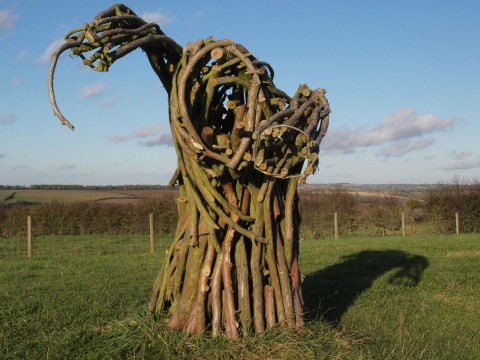The King Stone

This fine standing stone is located just off the crest of the low rise that supposedly prevented the King seeing Long Compton (see the article 'Folklore and Legends'). Immediately to the north-east there was an early Bronze Age round cairn 17m across with a central chamber (of which the capstone peeps through the grass) set exactly at the top of the ridge. There was at least one other Bronze Age barrow nearby and excavations in the 1980s revealed human cremations marked by wooden posts and others inserted into the top of the cairn. The King Stone is most likely to have been erected around 1500 BC as a permanent memorial to the burial ground rather than being an outlier to the much older Stone Circle.
The name ‘King Stone’ may have originated, like some other standing stones of the same name, from its use to mark an important meeting place associated with an extensive Saxon cemetery in the vicinity; but if so, the name may only reflect the adoption of the pre-existing standing stone for that purpose rather than having been erected in the Saxon period, but that is not known for certain.
The strange shape of this standing stone (likened to a seal balancing a ball on its nose) has less to do with weathering effects than the destructive habits of 19th century souvenir-hunters (and by legend, cattle drovers who chipped off small pieces to act as lucky charms to keep the Devil at bay). The serious damage caused by such vandalism was one of the reasons why legal protection for ancient remains was introduced in 1882, the Rollright Stones being among the first monuments to be put into the guardianship of the state. The railings round the King Stone were erected soon afterwards to prevent further damage, and between c.1911 and c.1950 had an upper tier (for which the attachment holes are still visible).
The witch sculpture

In 2012, inspired by the legend of the Witch and the King, the environmental artist David Gosling created a wooden sculpture of a witch. This was made of the branches of Wellingtonia trees that were donated by Compton Verney Park, and held together with wire. The sculpture lasted for over a year but eventually succumbed to the forces of nature.
Downloads
- The King Stone audio tour (zip 829KB)